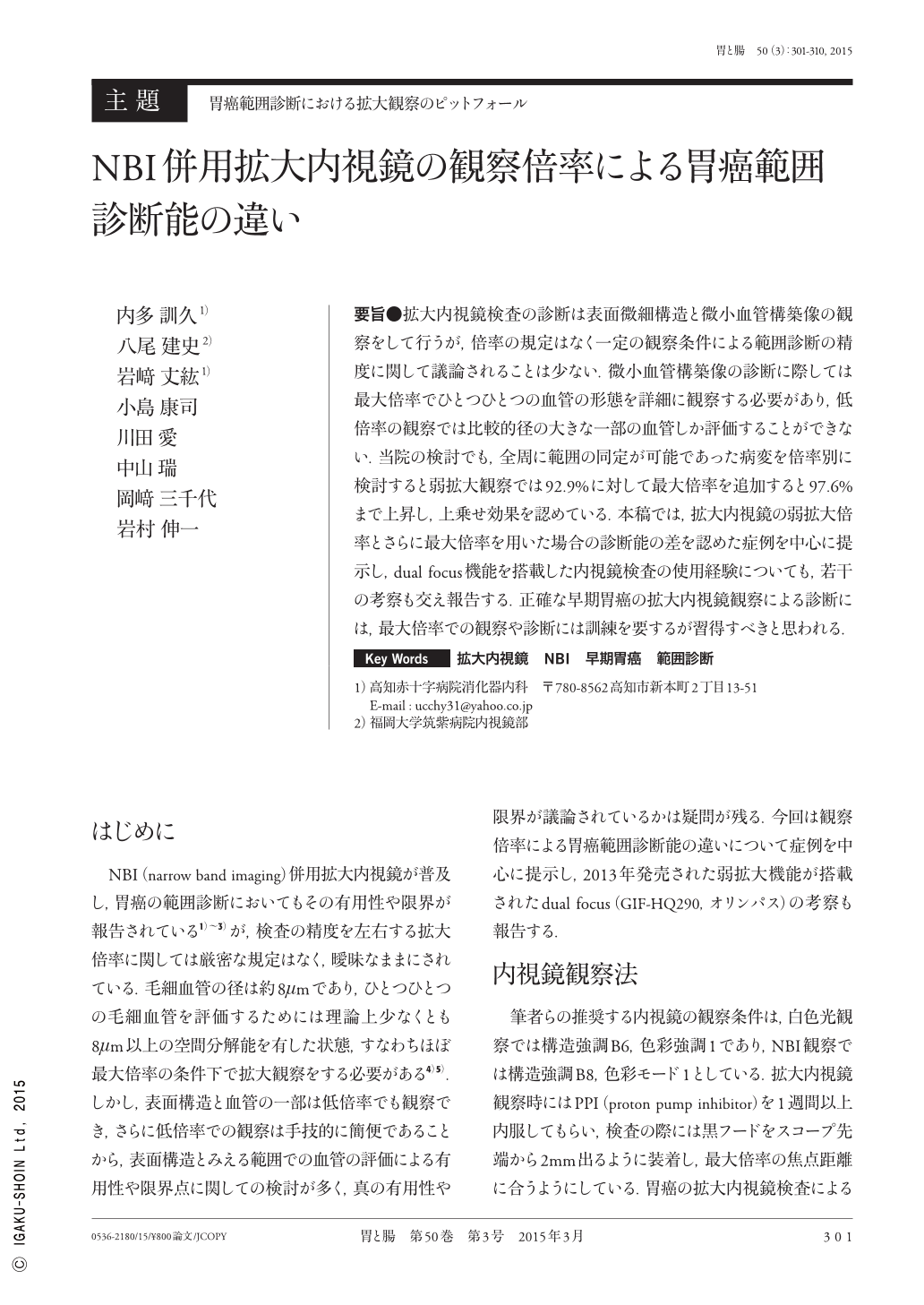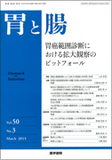Japanese
English
- 有料閲覧
- Abstract 文献概要
- 1ページ目 Look Inside
- 参考文献 Reference
- サイト内被引用 Cited by
要旨●拡大内視鏡検査の診断は表面微細構造と微小血管構築像の観察をして行うが,倍率の規定はなく一定の観察条件による範囲診断の精度に関して議論されることは少ない.微小血管構築像の診断に際しては最大倍率でひとつひとつの血管の形態を詳細に観察する必要があり,低倍率の観察では比較的径の大きな一部の血管しか評価することができない.当院の検討でも,全周に範囲の同定が可能であった病変を倍率別に検討すると弱拡大観察では92.9%に対して最大倍率を追加すると97.6%まで上昇し,上乗せ効果を認めている.本稿では,拡大内視鏡の弱拡大倍率とさらに最大倍率を用いた場合の診断能の差を認めた症例を中心に提示し,dual focus機能を搭載した内視鏡検査の使用経験についても,若干の考察も交え報告する.正確な早期胃癌の拡大内視鏡観察による診断には,最大倍率での観察や診断には訓練を要するが習得すべきと思われる.
To diagnose gastric cancers, microsurface and microvascular patterns are observed and characterized by magnifying endoscopy, but the magnifying ratio that magnifying endoscopy provides has not been determined. No published reports of the effect of different magnification levels on the ability to delineate margins of early gastric cancers are available. Maximal optical magnifying ratio is necessary to observe microvascular pattern in detail. In our study, the sensitivity of low power optical magnifying endoscopy with narrow band imaging(NBI)for delineation of gastric cancer margins was 92.9% and 95.0% for high power optical magnifying endoscopy with NBI. This study showed that the diagnostic ability of high power optical magnifying endoscopy is superior to low power optical magnifying endoscopy. We reported these cases and our experience in using the dual-focus scope.
To diagnose early gastric cancer accurately, it is critical to apply magnifying endoscopy with maximal magnifying ratio.

Copyright © 2015, Igaku-Shoin Ltd. All rights reserved.


